I know I harp on this a lot when I do articles about eating plants but if you don’t know what it is, DON’T EAT IT!
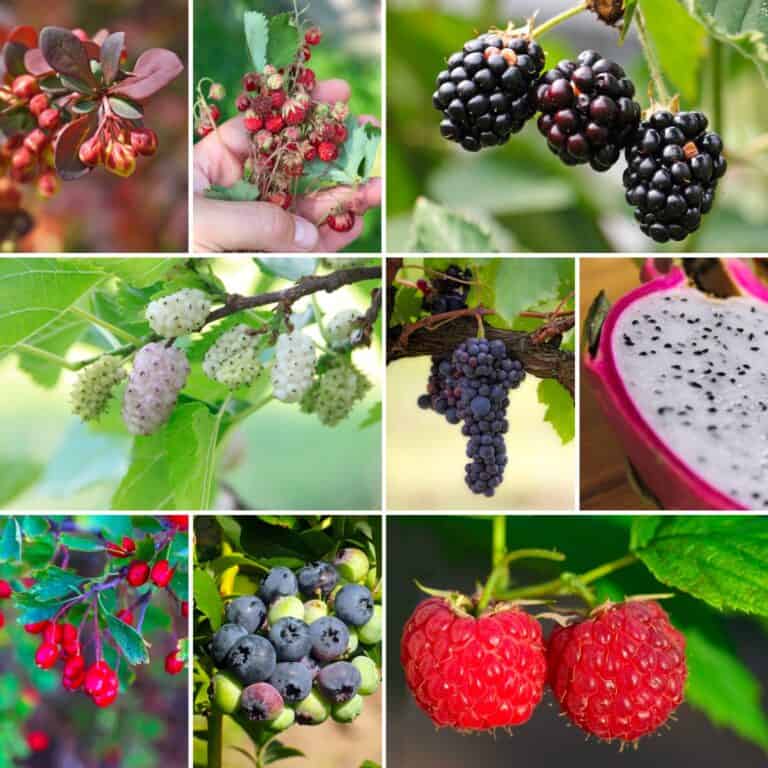
With that said, I must acknowledge that sometimes you won’t always have a choice about what to eat (i.e. maybe you’re lost in the bush).
If you’re hungry and you’ve got little/no food with you then you’d likely prefer to risk poisoning over starvation. With that in mind, it would help if you could identify which berries are safe to eat. So, let’s get into it…
The Berries which aren’t Berries
Berries which aren’t berries, what am I talking about here? Well, berries are botanically defined as fruits grown from flowers with a single ovary that has two or more seeds on the inside.
Berries that come from flowers with multiple ovaries have smaller subunits or seed pockets all joined together on the outside.
These are typically called drupes (unless you’re talking about strawberries where those are called achenes).
To be fair, though, people have been naming things berries since long before the scientific classification came around.
So, what types of berries do we have that aren’t actually berries?
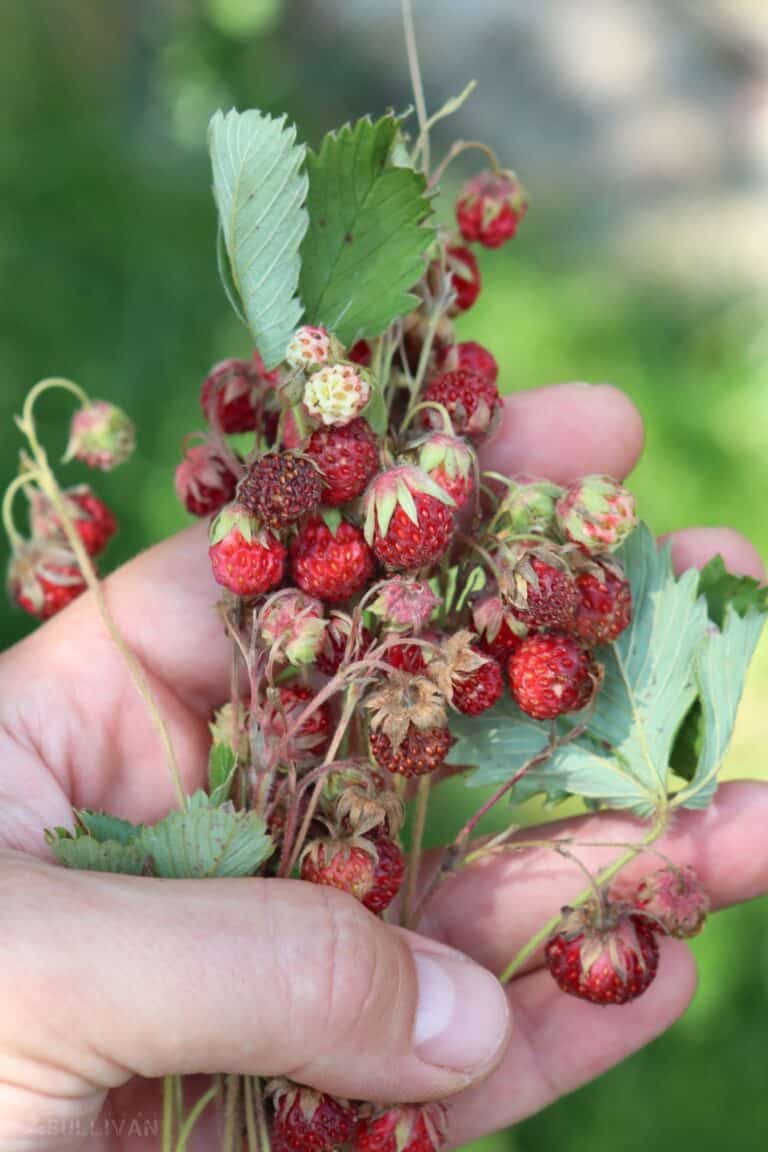
1. Wild Strawberries
*Gasp* Strawberries aren’t strawberries? You mean we’ve been living a lie for so long?
Yes, as odd as it sounds, strawberries are NOT actually berries; they do have more than two seeds, but those seeds are on the outside in the achenes (those little oval spots on the strawberry’s skin).
The true wild strawberry (Fragaria Vesca) is a member of the rose family and is common throughout the northern hemisphere.
Wild strawberries are smaller than their commercial counterpart. They usually ripen in late spring or early summer. They are full of flavor and highly nutritious.
2. Mock Strawberries
The mock strawberry or Indian strawberry (Potentilla Indica) is similar to the wild strawberry with the key difference being in the color of their blossoms (mock strawberries have yellow flowers in contrast to the true wild strawberry’s white/pink ones). They can be eaten but aren’t as nice.
3. Mulberries
Mulberries are a personal favorite of mine as I used to eat them by the handful in my grandmother’s backyard.
These are found in tropical and subtropical regions of the northern and southern hemispheres and grow in sweet, juicy clusters.
Mulberries are rich in vitamins B and C, magnesium, and potassium. They also provide a helping of iron and have strong antioxidant properties.
4. Blackberries
Blackberries have a sweet flavor with a hint of tartness to them and have been a tasty treat for thousands of years. They are high in antioxidants which have anti-microbial and anti-inflammatory properties.
They’re high in fiber which aids in improving digestion and eases constipation. Additionally, these fruits are high in vitamins C, E, and K, calcium, and manganese.
Blackberries have also been linked to managing diabetes, improving/increasing insulin sensitivity, and reducing the risk of obesity.
5. Raspberries
Raspberries are native to North America, but the seasonal yields are typically very low; this makes them very, very expensive – depending, of course, on where you are. With that said, if you find these, they are a very tasty treat.
There have been claims that these have medicinal uses for, among other things, high blood pressure, but there isn’t enough research data on whether it works or not.
Actual Berries
Now that we’ve looked at the ‘berries’, let’s have a look at actual berries!
6. Aronia Berries
Aronia berries are native to North America, but you can find them elsewhere in the world – although, the chemical makeup of each variant will different.
Considered one of the richest sources of antioxidants, Aronia berries were traditionally used by Native American tribes as a cold remedy.
They’re usually used in purees, jellies, syrups, and wines because of their mouth-drying effect.
While they’ve a low-calorie content, Aronia berries are high in fiber, vitamin C, and manganese. They also provide vitamins A and E and iron.
7. Barberry
Commonly found in Europe, North Africa, Asia, and the Middle East, Barberry plants form a family of 500+ members (Berberis Berberidaceae).
The most commonly-known member of this rather extensive family is Berberis Vulgaris – the European barberry (also called the common barberry).
Barberries have a very sharp taste and are rich in vitamin C. They also contain an alkaloid called Berberine which has anti-inflammatory, hypotensive, anticonvulsant, and sedative effects.
8. Bearberries
Bearberries have been used as a remedy for around 100+ years for urinary tract problems. They can be found in places like California, New Mexico, Siberia, and the Himalayas.
Now, while the berries themselves can’t be eaten, you can consume the powder formed by crushed bearberry leaves.
Long-term use in high amounts can be toxic and produces some nasty side effects including nausea, liver/kidney damage, indigestion, fatigue, irritability, and insomnia.
For this reason, it’s recommended that you see a doctor before using a bearberry product.
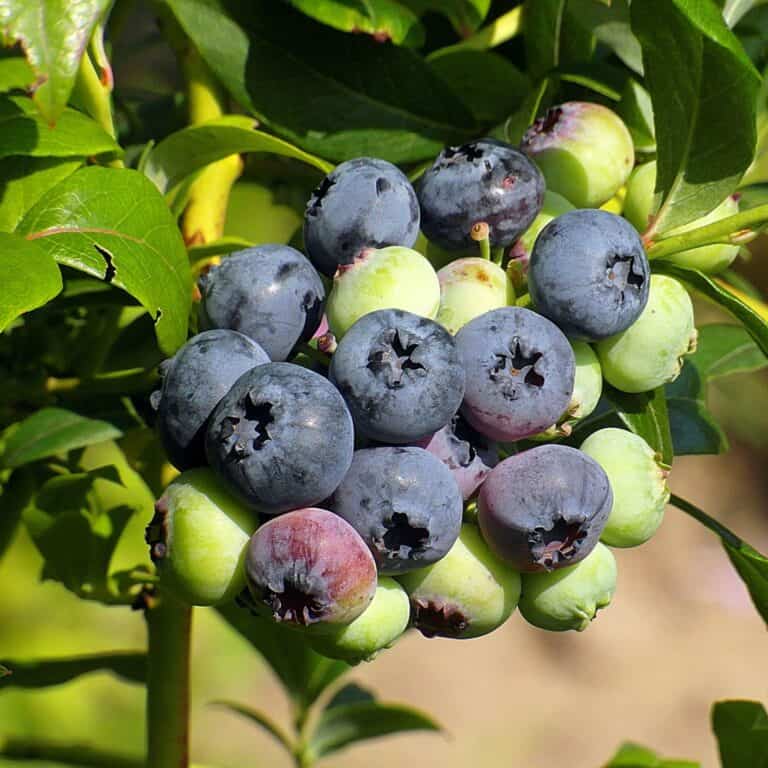
9. Blueberries
Blueberries – excuse me a moment while I handle my drooling. I love these things, sweet and juicy.
Native to eastern Canada and the southern and eastern parts of the USA, blueberries are a culinary treat eaten by birds, bears, and the Native American tribes that lived in areas where they grew in abundance.
We do get these in certain parts of South Africa, commonly found in jams and/or muffins.
10. Grapes
Yes, grapes are a type of berry. They’re native to Europe, Asia, and the Mediterranean regions among other places.
Soft and sweet, grapes are used typically in making wine and can be enjoyed either fresh or, if you like a bit of crunch in your fruit, you can freeze them – if you have horses, they will certainly enjoy a frozen grape or two.
11. Cranberries
No, not the band, Cranberries are native to eastern Canada and the northeastern and central America, and parts of Europe.
The berries themselves are quite sour and are typically used in making cranberry sauce to be served with roast turkey at thanksgiving.
12. Dewberries
Dewberries are members of the blackberry (Rubus) family and are common to most parts of the Northern hemisphere and can be eaten fresh or used to make jams, pies, and cobblers.
The leaves can also be used to make teas. Juicy and sweet, dewberries are a tasty treat that’s difficult to get hold of without a mess. The berries are very soft and, as such, are easily squashed.
13. Elderberries
Native to Europe and North America, elderberries are typically used in the production of wines and cordials.
Although edible, these berries should be eaten with caution. They contain a variety of chemicals that, if not prepared properly, can be toxic. They’re also susceptible to fungal diseases.
14. Huckleberries
Native to the Pacific West Coast of the USA and coastal British Columbia. They look similar to blueberries but have a sweeter, stronger flavor and are commonly used in jams and preserves.
15. Dragon Fruit
Dragon fruit is another type of botanical berry which is part of the cactus family that’s found in the tropical regions of the world as well as in some states in the USA.
This fruit is nocturnal (it blooms at night) and has a rather sweet flavor and its flowers have a lovely scent. These are best eaten fresh by cutting them in half and scooping out the flesh.
16. Thimbleberries
Also called redcaps, thimbleberries resemble raspberries but are much smaller and rounder than raspberries.
Thimbleberries aren’t commercially available because they’re quite fragile and don’t ship well – tend to come apart under rough handling.
With that said, they have a pleasant flavor and are a favorite snack for birds and bears. You can also make tea out of it if you prefer a nice drink over a fruit.
Fun fact: You can use thimbleberry leaves as toilet paper in the wilderness…maybe that’s not such a fun fact after all.
17. Gooseberries
Gooseberries are found in Europe, Asia, and northern Africa. The berries are usually green but have a few variants including red, white, purple, and yellow fruits.
These are found in bushes with sharp spines protruding from thick branches. Gooseberries have a pleasant taste and were a popular fruit to grow in the late 19th century.
18. Conkerberries
Conkerberries are also called bush plums and have a very sweet flavor. They can, however, only be eaten when fully ripe – the unripe fruit and the milky sap is poisonous.
They are found in the tropical parts of southern Asia, Africa, Australia, and on some islands in the Indian Ocean.
It’s a popular bush snack in Australia both for people and animals alike but it’s also often considered a weed as it tends to choke out most of the other plants in its vicinity which makes it difficult for cattle/livestock to graze.
19. Pomegranate
Pomegranates are found in several parts of the world including the Middle East, North Africa, and the Mediterranean Basin.
They have a sweet but tart flavor which is, admittedly an acquired taste but is by and large very popular fruits on which to snack.
20. Chinese Wolfberry
Native to Asia – notably China – and parts of Europe, the Wolfberry (also called a goji berry) is found in two variants (Lycium Barbarum and Lycium Chinense) and is commonly used in traditional Asian cuisine.
Thanks to some exaggerated (and unproven) claims about health benefits, it’s also pretty common to find snack foods that have dried goji berries or goji berry products.
21. Blue Honeysuckle/Honeyberry
Lonicera caerulea or the Blue Honeysuckle is a member of the honeysuckle family that’s found in Canada, Japan, Russia, and Poland.
This plant has a rectangular blue berry which has a particularly sweet taste. Much like grapes, honeyberries are used in jams, pies/pastries, and beverages.
22. Araza
Native to the Amazon, the Araza tree produces a fruit that is generally seen as underused. The fruit itself is highly acidic and so is best consumed with sugar (if you’re eating it directly).
With that said, it’s best to use the processed form of fruit, desserts, juices, ice creams, and jellies.
23. Brazilian Cherry
This fruit is found in southern Brazil, is a purple or black color, and tastes like cherries – hence the name.
Unfortunately, this one is very rare, and the plant is considered to be an endangered species.
24. Prickly Pear
Prickly pear is a member of the cactus family and is found in semi-arid parts of the world.
The fruit is used in breakfasts, dinners, and if you’re in my family, as snacks. They have a sort of green bean texture to them and are relatively sweet.
25. Kiwi
Kiwis are nice and sweet, but they are something of an acquired taste; you either love them or you don’t. Native to southern China, kiwifruits have a greenish flesh and are incredibly juicy; they have a very sugary taste to them.
26. Camu Camu
Native to the Amazon Rainforest, the camu camu has been used by the native tribes for years and has exceptionally high vitamin C content.
When ripe, the fruit is either maroon or purple-black in color and can have either a very sweet taste or a very acidic taste.
27. Bananas
Yep, bananas are classified as berries too. They’re found all over the world and have a sweet taste to them. They’re also rich in potassium, and form part of a favorite South African treat – Banana bread…yum!
28. Peppers
Peppers are also considered a berry and are typically red, yellow, or green in color. They have a soft by crunchy flesh with a sweet taste and go exceptionally well in a salad.
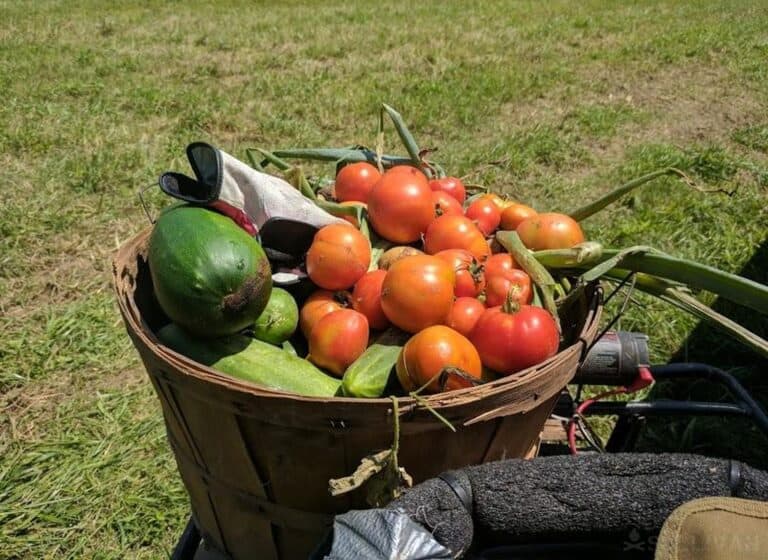
29. Tomatoes
Tomatoes, unlike many of the entries on this list are very acidic and have a somewhat sour taste. With that said, I don’t know many people who’d turn down a grilled cheese and tomato sandwich.
30. Flacourtia Rukam
Flavcourtia Rukam is a member of the willow family. It’s native to Southeast Asia, India, Polynesia and is also called the Indian plum.
In the wild, they’re found in trees with trunks lined with nasty-looking thorns some 10cm in length. Although, the cultivated variants are free of thorns.
31. Fox Grape
Used mostly in winemaking, fox grapes can be found throughout the eastern part of North America.
It has a sweet, musky smell to it and is one of the few grapes which can be peeled without squashing all the good stuff.
Unfortunately, it doesn’t have high grafting compatibility and is considered in many states to be an invasive weed.
32. Kei Apple
Native to southern Africa, Kei apples can be found along the Kei River and all the way down to Tanzania. The fruits are sweet, juicy yellow berries with an apple flavor – hence the name Kei apple.
33. Oriental Persimmon
Found primarily in China, the oriental persimmon is sweet and tangy and, when ripe is like a fruit-flavored jelly inside a thin shell. If the fact that it’s like jelly isn’t reason enough to give this one a try, I don’t know what is.
34. Passionfruit
Passiflora edulis or the passionfruit is a member of the passionflower family and is native to Brazil and Paraguay. The fruit itself is harvested for its sweet, juicy fruit.
Passionfruit has numerous uses throughout the world including dessert toppings, winemaking, and fruit juices.
35. Velvet Apple
Native to the Philippines, the velvet apple resembles a mango with a soft, sweet juicy fruit encased in a thin skin that is covered in a fine ‘fur’ giving it its name – the velvet apple. There is also quite a variety in terms of coloration, shape, ‘hairiness’, and flavor.
36. Giant Granadilla
The largest fruit of the passionflower family, the giant granadilla is found in neotropical climates in places like South America and the Caribbean.
The fruit is soft and sweet with plenty of seeds and is commonly used in fruit juices, ice creams, and, oddly enough, vegetable curries.
37. Abiu
The Abiu is a fruit tree that’s found in the Amazon Rainforest, it has edible fruits which, when ripe, have a yellow skin. The fruit itself has a jelly-like texture and tastes like caramel custard.
38. Apple Berry
Native to Australia, the apple berry resembles a kiwi and has a silky look and feel to it (though the fruit becomes more brittle as it matures).
It has been used as bush food for a few hundred years or so; the apple berry can be eaten fresh – when it’s ripe – or you can take the unripe fruit and roast it. Depending on who you ask, the flavor is either of stewed apples or of kiwi.
39. Tamarillo
Also called a tree tomato, the tamarillo is a member of the nightshade family and is native to Ecuador, Colombia, Argentina, Peru, Chile, and Bolivia.
Taste-wise, it can be compared to a kiwi, passionfruit, or tomato; it has a unique, tangy flavor which will vary in sweetness. Tamarillos can be used in chutneys, desserts, sauces, and curries.
40. Blackcurrant
Okay, so blackcurrants are native to northern Europe, and we don’t really get them in South Africa. That said, we do sometimes get blackcurrant jams which are…an acquired taste.
They’re very tart – much like the fruits from which they’re made but that tartness is what makes them popular for both sweet and savory cooking.
The strong flavor can be offset by combining it with something like strawberries or raspberries.
41. Guava
Guava juice anyone? No? Well, suit yourselves. Okay, all jokes aside; yes, guavas are classified as berries.
Their size can vary between apricot and grapefruit sizes, and they have a very sweet – if a bit bland – flavor to them.
They can bloom in many places but, as is the case in the Galapagos Islands, they can become invasive – something to keep in mind if you decide to cultivate them yourself.
42. Lucuma
The lucuma is a fruit that grows on the lucuma tree which is native to the Andean valleys of Bolivia, Chile, Peru, and Ecuador. This is a very sweet fruit which is popularly used to flavor fruit juices and ice cream.
43. Maqui Berry
The maqui berry is native to Chile and southern Argentina and is also called the Chilean wineberry.
It has been studied quite a bit and has been found to reduce cholesterol-related stress.
As far as flavor goes, it tastes like a blackberry so if you like blackberries you’ll like maqui berries.
44. Eggplant
The eggplant is another member of the nightshade family and has a sort of meaty/spongy texture.
It’s rarely eaten raw as it has a very bitter taste to it but the flavor changes when cooked. As such, it’s served in a variety of dishes across the world.
45. Malabar Plum
A type of rose apple originating in southeast Asia, the Malabar plum has a thin, waxy skin and is often mistaken for a guava. Unlike guavas, however, the fruit has a fluffy texture and is often served (in Asia) with spiced sugar.
46. Papaya
This is a very popular fruit in South Africa, but its origins are the tropical regions of the Americas.
It’s a soft, sweet fruit with an orange color (when ripe) which is often eaten raw with the seeds removed. The unripe fruit must be cooked before it can be eaten as it contains poisonous latex.
47. Star Fruit
Star fruit is native to southeast Asia and is a member of the Oxalidaceae family. It gets its name from the shape produced by cutting it – a star.
It can be eaten and is used in traditional Asian medicine for chickenpox, headaches, intestinal parasites, and other problems.
Now, there is one catch to this one; star fruit contains oxalic acid which is toxic in high quantities. This means that although star fruit is edible, it should only be eaten in moderation.
48. Strawberry Tree Fruit
Now, I know what you’re thinking: “Didn’t he say that strawberries aren’t berries?”
They’re not, and this isn’t really a strawberry either. The name strawberry tree comes from the fact that the fruit resembles a strawberry.
This tree and its fruit are found in the Mediterranean and have been used in herbal medicine as antiseptics, diuretics, and other such treatments.
Culinarily, these are difficult to transport as they bruise very easily and are usually used in jams, marmalades, yogurts, and, of course, alcoholic drinks.
49. Merne Atwakeye
Also called the bush orange, this particular fruit is found in Australia and has been used by the Aborigines as bush food for years.
In addition to a high vitamin C content, it has a sweet smell and a nice, tangy taste to it. You can add it to main courses, and make desserts or drinks with it.
There are several native names for this one including merne atwakeye, bambul, and iga warta.
50. Saguaro Fruit
The Saguaro is a member of the cactus family native to the Sonora Desert in Arizona, Mexico, and California.
The fruits produced are a deep red and usually out of reach, having to be harvested with a pole. It’s almost like the cactus is trying to keep the fruit for itself and, maybe, the birds.
That said, if you can get hold of a saguaro fruit, it’s a sweet, fleshy treat – so maybe it’s worth the effort.
51. Rose Myrtle
The short-leaved myrtle or rose myrtle is found in the rainforests of eastern Australia and has a pleasant fragrance and flavor reminiscent of a Brazilian cherry.
52. Muscadines
Muscadines are native to the USA and have a plum-like texture with a sweet, musky flavor.
They’re high in fiber and riboflavin (Vitamin B2) and contain a powerful antioxidant called resveratrol.
53. Saskatoon Berries
Native to North America, Saskatoon berries are popular because of their sweet, nutty flavor and are commonly used in pies, beers, ciders, jams, and wines. They’re also occasionally used in cereals and trail mixes.
54. Buffaloberries
Another North American berry, the buffaloberry has a rough, dark red skin with white dots.
They have a bitter taste when fresh but are often cooked and made into jams, syrups, and jellies.
As nice as all that sounds, however, considerable caution should be taken when eating these as they can give you a bad case of diarrhea if you eat too many.
55. Sea Buckthorn
Native to Europe and Asia, sea buckthorn is rich in vitamins C, E, and K, fiber, minerals, and amino acids. The sugar and fructose content gives it a nice, sweet taste.
56. Salal
Salal is native to the western part of North America and has a sweet taste that lends itself well to jams, pies, and preserves. It’s also commonly combined with Oregon Grape to offset the tartness of the grape.
57. Maypop
The maypop is a member of the passionflower family, and, like its relatives, it has a very sweet flavor. It also has a pleasant aroma and is best eaten fresh. Common uses include jams, jellies, desserts, and as a flavoring for drinks.
58. Naranjilla
Hailing from Colombia, the naranjilla is a member of the nightshade family (seriously, I thought nightshade was supposed to be poisonous) and is very much like a tomato.
It’s very delicate and bruises easily which makes transport a tricky business and it needs partial shade to grow well. Taste-wise, it has a citrus flavor that’s like a combination of rhubarb and lime.
59. South American Sapote
The South American Sapote is found in the Amazon rainforest, Brazil, Ecuador, Colombia, and Peru. The fruit is a soft, sweet, juicy thing with an orange-yellow color.
Unfortunately, the quality of the fruit will vary from tree to tree, but they can be eaten fresh and/or juiced.
60. Wampee
The Wampee is a fruit that’s native to southeast Asia, it comes from a strongly scented evergreen tree and has oval-shaped fruit that’s about the size of a grape.
It’s popular in China, Vietnam, Malaysia, Indonesia, and the Philippines and has a citrus flavor.
I’m Drooling Again…
Well, that was a fun piece to write…except that it’s got me drooling again!
These aren’t all the edible wild berries in the world – it’d take years before I got anywhere close to that (if I even could get close).
Obviously, you need to know how to identify the correct berries so that you know which ones are safe and which ones aren’t but if you can identify edible berries/fruits then you’ve got a veritable smorgasbord of a menu in front of you.
As always, I hope you enjoyed the article and found it informative. Thanks for reading and I’ll see you soon for the next one!
Take care and Happy Snacking!
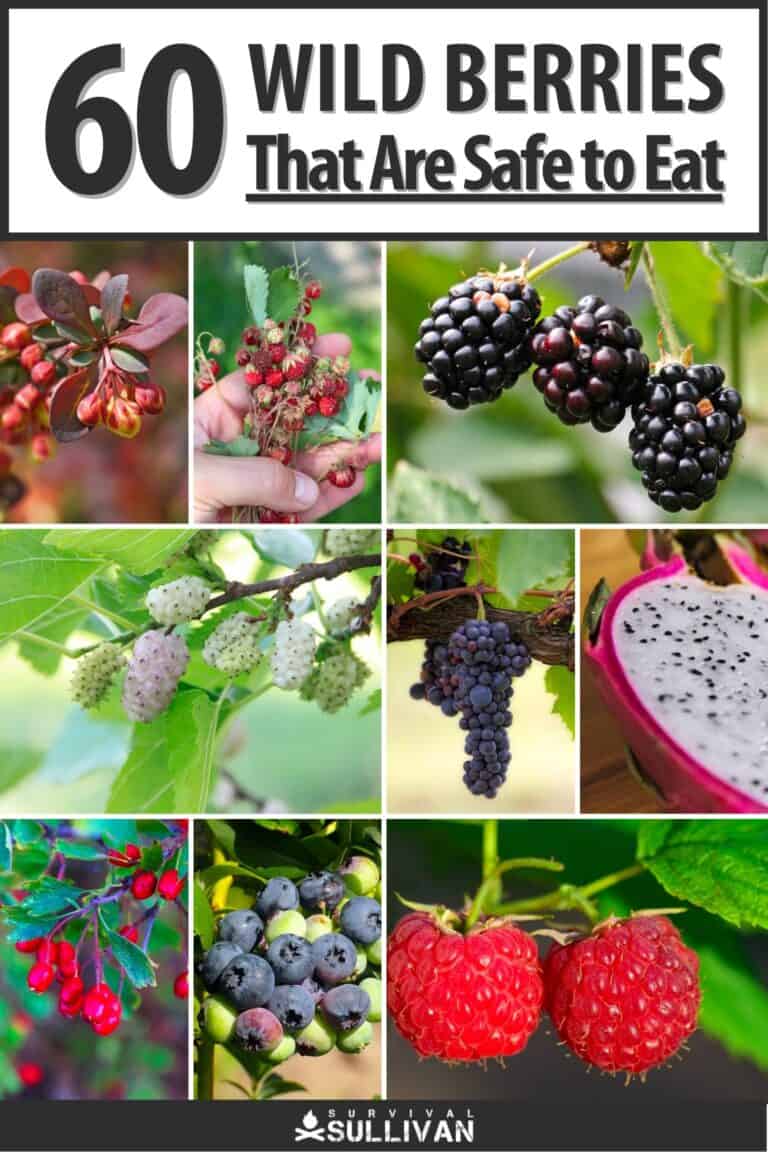

Greg spent much of his younger years camping and hiking. Greg grew up on a small farm with lots of livestock such as cows, horses and chickens. He’s good with a bow and arrow, is a huge knife enthusiast, and has a blackbelt in Taekwondo.

It would be more helpful if each berry also accompanied with a photo or two, so we can learn even more . Thanks for the introduction.